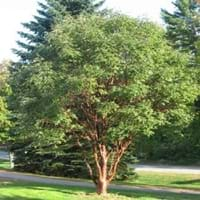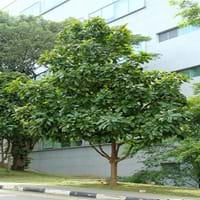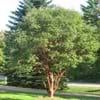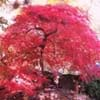Life Span
Perennial
Perennial
Origin
China
Southeastern Asia, India, China
Types
Not Available
Not Available
Habitat
Mixed deciduous forest
Subtropical forests, Tropical Forests
USDA Hardiness Zone
4-8
10-15
Sunset Zone
2a, 2b, 3a, 3b, 4, 5, 6, 7, 8, 9, 14, 15, 16, 17, 18, 19, 20, 21
H1, H2, 24
Habit
Upright/Erect
Spreading
Flower Color
Yellow
Ivory
Flower Color Modifier
Bicolor
Bicolor
Fruit Color
Green
Green, Yellow green, Brown
Leaf Color in Spring
Dark Green
Dark Green
Leaf Color in Summer
Dark Green
Dark Green
Leaf Color in Fall
Red, Green, Bronze, Orange Red
Dark Green
Leaf Color in Winter
Not Available
Dark Green
Leaf Shape
Compound
Oblong or Lanceolate
Plant Season
Spring, Summer, Fall, Winter
Spring, Summer, Fall, Winter
Sunlight
Full Sun
Full Sun, Partial Sun
Type of Soil
Clay, Loam
Loam, Sand
The pH of Soil
Acidic, Neutral, Alkaline
Acidic, Neutral
Soil Drainage
Well drained
Average
Bloom Time
Spring
Early Summer, Summer, Late Summer
Tolerances
Not Available
Not Available
Where to Plant?
Ground
Ground
How to Plant?
Grafting, Seedlings
Cuttings, Seedlings
Plant Maintenance
Medium
Medium
Watering Requirements
Medium
Average Water Needs
In Summer
Lots of watering
Lots of watering
In Spring
Moderate
Moderate
In Winter
Average Water
Average Water
Soil pH
Acidic, Neutral, Alkaline
Acidic, Neutral
Soil Type
Clay, Loam
Loam, Sand
Soil Drainage Capacity
Well drained
Average
Sun Exposure
Full Sun
Full Sun, Partial Sun
Pruning
Remove damaged leaves, Remove dead branches, Remove dead leaves
Remove dead branches
Fertilizers
All-Purpose Liquid Fertilizer
Put diluted fertilizers
Pests and Diseases
Red blotch
Chlorosis, Susceptible to insect pests and moulds
Plant Tolerance
Drought
Drought
Flowers
Insignificant
Showy
Flower Petal Number
Single
Single
Foliage Texture
Medium
Coarse
Foliage Sheen
Matte
Glossy
Attracts
Not Available
Not Available
Allergy
Not Available
Not Available
Aesthetic Uses
Showy Purposes
Showy Purposes
Beauty Benefits
Not Available
Not Available
Environmental Uses
Air purification
Air purification
Medicinal Uses
Not Available
Antibacterial, Antidiabetic, Antifungal, antimicrobial, Astringent, Expectorant
Part of Plant Used
Wood
Bark, Fruits, Leaves
Other Uses
Showy Purposes
Jam, Jelly, used in Indian cuisine in curries
Used As Indoor Plant
No
No
Used As Outdoor Plant
Yes
Yes
Garden Design
Feature Plant, Foundation, Mixed Border
Edible, Feature Plant, Fruit / Fruit Tree, Shade Trees, Tropical
Botanical Name
ACER griseum
DILLENIA indica
Common Name
Paperbark Maple
Chulta, Elephant Apple
In Hindi
paperbark maple
Elephant Apple
In German
paperbark Ahorn
Elefant von Apple
In French
érable paperbark
Elephant d'Apple
In Spanish
arce paperbark
El elefante de Apple
In Greek
Paperbark σφενδάμου
ελέφαντας της Apple
In Portuguese
de bordo paperbark
Elefante da Apple
In Polish
klon paperbark
Słoń Jabłko
In Latin
paperbark acernis
Elephant Apple
Phylum
Magnoliophyta
Magnoliophyta
Class
Magnoliopsida
Magnoliopsida
Order
Sapindales
Dilleniales
Family
Aceraceae
Dilleniaceae
Clade
Angiosperms, Eudicots, Rosids
Angiosperms, Core eudicots, Eudicots
Tribe
Not Available
Not Available
Subfamily
Not Available
Not Available
Number of Species
Not Available
Not Available
Difference Between Paperbark Maple and Elephant Apple
If you are confused whether Paperbark Maple or Elephant Apple are same, here are some features about those plants to help you choose better. Many people think that these two plants have the same characteristics, but one can see Paperbark Maple and Elephant Apple Information and learn more about it. Fertilizers required for proper growth of Paperbark Maple are All-Purpose Liquid Fertilizer, whereas for Elephant Apple fertilizers required are Put diluted fertilizers. Hence, one should know the basic difference between Paperbark Maple and Elephant Apple if you are planning to have them in your garden to enhance its beauty.
<
Flowering PlantsImportance of Paperbark Maple and Elephant Apple
Want to have the most appropriate plant for your garden? You might want to know the importance of Paperbark Maple and Elephant Apple. Basically, these two plants vary in many aspects. Compare Paperbark Maple and Elephant Apple as they differ in many characteristics such as their life, care, benefits, facts, etc. Every gardener must at least have the slightest clue about the plants he wants to plant in his garden. Compare their benefits, which differ in many ways like facts and uses. The medicinal use of Paperbark Maple is Not Available whereas of Elephant Apple is Antibacterial, Antidiabetic, Antifungal, antimicrobial, Astringent and Expectorant. Paperbark Maple has beauty benefits as follows: Not Available while Elephant Apple has beauty benefits as follows: Not Available.
Compare Facts of Paperbark Maple vs Elephant Apple
How to choose the best garden plant for your garden depending upon its facts? Here garden plant comparison will help you to solve this query. Compare the facts of Paperbark Maple vs Elephant Apple and know which one to choose. As garden plants have benefits and other uses, allergy is also a major drawback of plants for some people. Allergic reactions of Paperbark Maple are Not Available whereas of Elephant Apple have Not Available respectively. Having a fruit bearing plant in your garden can be a plus point of your garden. Paperbark Maple has no showy fruits and Elephant Apple has showy fruits. Also Paperbark Maple is not flowering and Elephant Apple is not flowering . You can compare Paperbark Maple and Elephant Apple facts and facts of other plants too.





